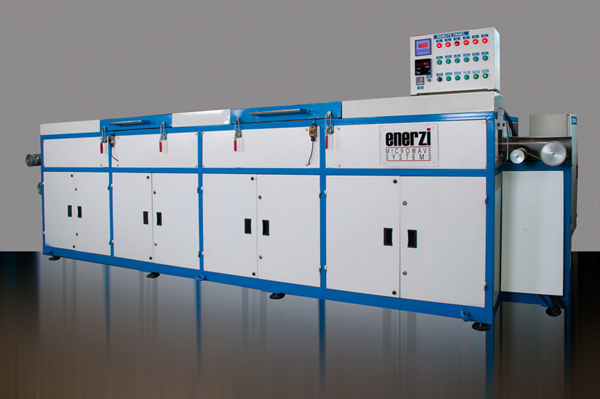Sustainability has become a central concern for industries worldwide, including rubber production. Rubber is a critical material used in various applications, from tires to medical devices, but its production often raises environmental and social issues. Achieving eco-friendly rubber production faces several roadblocks that demand innovative solutions and collective efforts. In this blog post, we will explore the challenges the rubber industry faces on its path towards sustainability and the strategies needed to overcome them.
- Deforestation and Land Use
Challenge: A significant portion of natural rubber is derived from rubber tree plantations, often replacing forests and natural habitats. This land-use change contributes to deforestation, loss of biodiversity, and greenhouse gas emissions.
Solution: Promoting sustainable land use is essential. Initiatives like the High Carbon Stock Approach help identify areas for sustainable rubber cultivation while preserving high-conservation-value forests. Agroforestry practices, where rubber trees are intercropped with other vegetation, promote biodiversity and reduce environmental impact.
- Agrochemical Use
Challenge: Rubber plantations frequently rely on agrochemicals such as pesticides and fertilizers. These chemicals can contaminate soil and water, harm wildlife, and pose health risks to workers.
Solution: Transitioning to integrated pest management (IPM) can reduce chemical use. IPM combines biological control, organic farming techniques, and targeted pesticide application to minimize environmental impact. Additionally, adopting organic farming practices can help reduce the reliance on synthetic chemicals.
- Water Usage and Pollution
Challenge: Rubber processing involves substantial water consumption and can result in water pollution due to the release of chemicals and effluents.
Solution: Implementing water-efficient processing technologies and recycling systems can minimize water consumption and reduce pollution. Investing in wastewater treatment facilities ensures that discharged effluents meet environmental standards.
- Labor and Social Issues
Challenge: Labor practices in some rubber plantations have been criticized for low wages, poor working conditions, and inadequate worker rights. Ensuring fair and ethical treatment of workers is crucial.
Solution: Certifications like Fair Rubber and Fair Trade promote fair labor practices in rubber production. Companies should adhere to labor standards and engage in responsible sourcing to ensure workers are paid fairly, have safe working conditions, and enjoy social benefits.
- Synthetic Rubber and Environmental Impact
Challenge: While synthetic rubber can reduce dependence on natural rubber and alleviate deforestation concerns, its production often involves energy-intensive processes and the use of petrochemicals.
Solution: Innovations in sustainable materials and production processes are essential. Research is ongoing to develop bio-based synthetic rubber using renewable feedstocks like bio-oils or algae. Improving the energy efficiency of synthetic rubber manufacturing can also reduce its carbon footprint.
- Supply Chain Transparency
Challenge: Tracking the origin and sustainability of rubber throughout the supply chain can be challenging due to its complex, global nature.
Solution: Utilizing blockchain technology and supply chain transparency platforms can provide real-time tracking and verification of rubber products’ sustainability credentials. This helps ensure that rubber is sourced responsibly and provides consumers with information about the products they purchase.
- Recycling and Waste Management
Challenge: Rubber waste, especially end-of-life tires, poses disposal challenges. Improper disposal can lead to environmental pollution and wasted resources.
Solution: Innovations in rubber recycling technologies are emerging, including methods to transform rubber waste into valuable materials like micronized rubber powder (MRP) and reclaimed rubber. Encouraging recycling and the responsible disposal of rubber products is critical to reducing waste and conserving resources.
- Climate Change Resilience
Challenge: Climate change can affect rubber production by altering weather patterns, increasing pest pressure, and causing extreme weather events.
Solution: Developing climate-resilient rubber varieties and implementing adaptive farming practices can help mitigate the impact of climate change. Research into drought-resistant rubber trees and pest-resistant cultivars is ongoing to ensure the sustainability of rubber production in a changing climate.
- Market Demand for Sustainable Products
Challenge: The demand for eco-friendly rubber products has grown, but price considerations often drive consumer choices.
Solution: Encouraging consumer awareness and preference for sustainable rubber products can drive market demand. Companies should continue to invest in research and development to make sustainable options more affordable and accessible.
Conclusion
The road to achieving eco-friendly rubber production is fraught with challenges, but it is a journey that the rubber industry must undertake to safeguard the environment, protect workers’ rights, and meet the growing demand for sustainable products. Addressing these roadblocks requires a holistic approach that encompasses sustainable land use, reduced agrochemical use, efficient water management, ethical labor practices, and responsible waste disposal.
Innovation is at the heart of overcoming these challenges. Researchers are working tirelessly to develop sustainable materials and processes, while companies are investing in eco-friendly technologies and responsible sourcing. Transparency and traceability in the supply chain will play a pivotal role in ensuring that rubber products meet sustainability standards.
As consumers become more conscious of the environmental and social impact of their choices, the demand for eco-friendly rubber products will continue to rise. By embracing sustainability and taking bold steps to address these roadblocks, the rubber industry can not only thrive in a changing world but also contribute to a more sustainable and responsible global economy.
Ever wondered how rubber is made resilient and durable? Step into our factory to see our Vulcanization Ovens in action!






